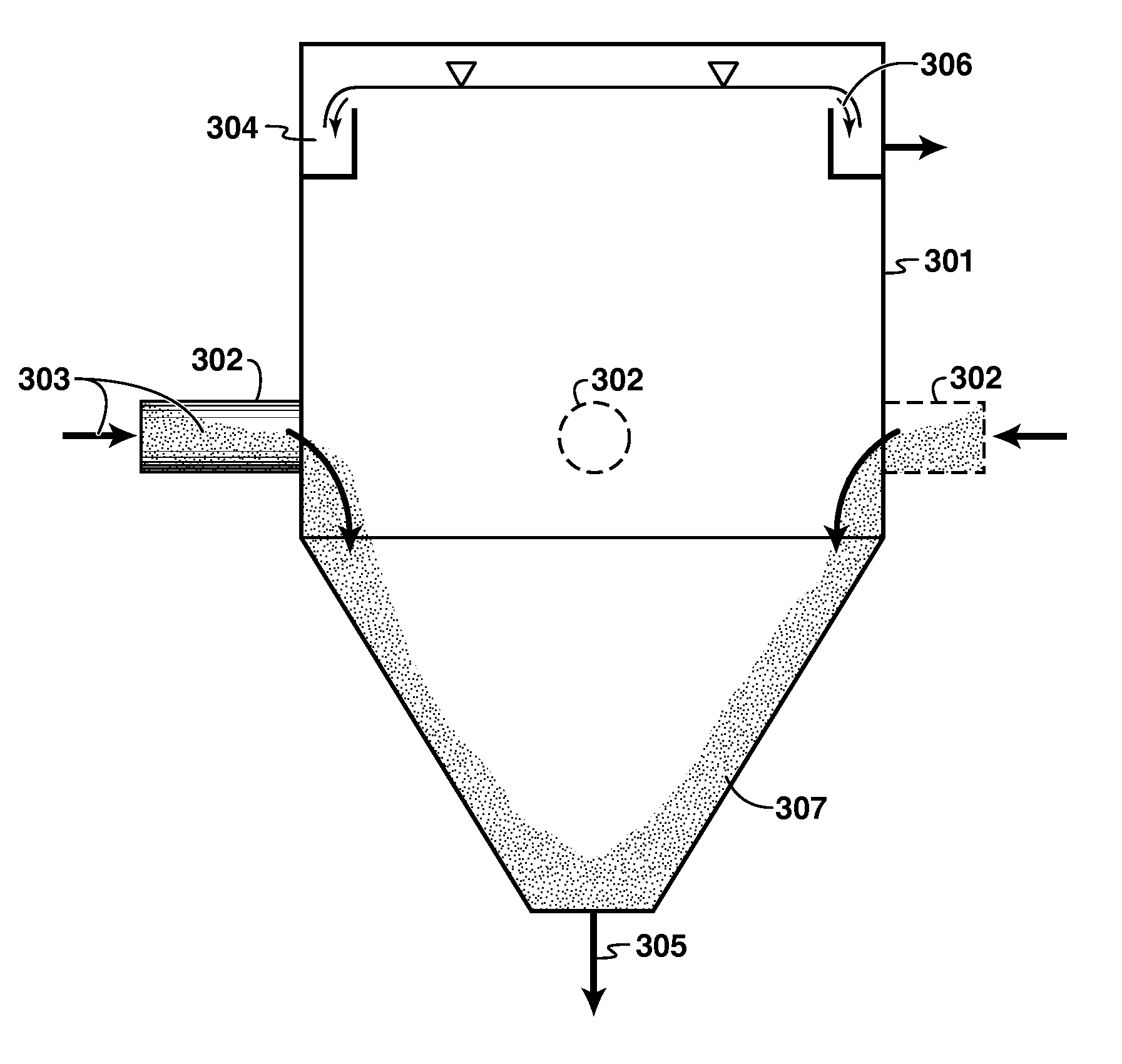Feed Delivery System For A Solid-Liquid Separation Vessel
a separation vessel and feed technology, applied in the separation process, working-up pitch/asphalt/bitumen, liquid displacement, etc., can solve the problems of hindering the ability of fine particles to escape, and achieve the effect of minimizing dispersion, facilitating separation of fine particles, and facilitating escap
- Summary
- Abstract
- Description
- Claims
- Application Information
AI Technical Summary
Benefits of technology
Problems solved by technology
Method used
Image
Examples
Embodiment Construction
[0023]Myriad solid-liquid separation vessels such as gravity, filtration, etc. are known. Gravity separation can be further classified according to the magnitude of the gravity force involved in the separation. For example, a 1 G force separator is typically called a thickener / clarifier and cyclones and centrifuges are typical high G force separators. A typical thickener type of separator is characterized by a cylindrical upper section with a conical lower section to withdraw settled / separated solids from the process.
[0024]One class of separation vessels to which the instant feed delivery may be applied are gravity separation vessels. One sub-class of gravity separation vessels to which the instant feed delivery may be applied are froth separation units (FSUs) used to separate tailings and diluted bitumen from a bitumen froth feed. FSUs will be now be explained further.
[0025]Among several processes for bitumen or heavy oil extraction, the Clark Hot Water Extraction (CHWE) process re...
PUM
| Property | Measurement | Unit |
|---|---|---|
| temperature | aaaaa | aaaaa |
| temperature | aaaaa | aaaaa |
| operating pressures | aaaaa | aaaaa |
Abstract
Description
Claims
Application Information
 Login to View More
Login to View More - R&D
- Intellectual Property
- Life Sciences
- Materials
- Tech Scout
- Unparalleled Data Quality
- Higher Quality Content
- 60% Fewer Hallucinations
Browse by: Latest US Patents, China's latest patents, Technical Efficacy Thesaurus, Application Domain, Technology Topic, Popular Technical Reports.
© 2025 PatSnap. All rights reserved.Legal|Privacy policy|Modern Slavery Act Transparency Statement|Sitemap|About US| Contact US: help@patsnap.com



